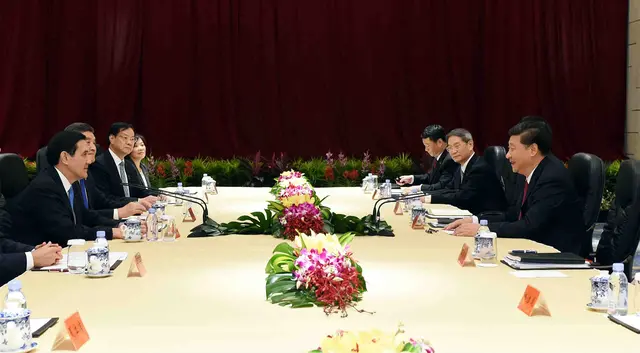The long term plan for the China Pakistan Economic Corridor (CPEC) – one of the flagship projects of the Belt and Road Initiative - will be announced on Monday, after discussions between both sides concluded last month.
CPEC was announced in May 2013, meaning it effectively predates the Belt and Road Initiative, which was first announced in September that year.
The four and a half years since CPEC was first unveiled have seen the project grow in size, scale and ambition. Work is already underway on various energy and infrastructure projects, and the announcement of the details of the long term plan will see work step up a gear.
Gwadar Port.
What is CPEC?
The economic corridor linking China’s landlocked western region to the Arabian Sea and Gulf of Oman will consist of some 3,000 kilometers of road, pipeline and railway infrastructure.
The corridor connects Kashgar, in Xinjiang Uygur Autonomous Region, to Gwadar Port, a site of massive Chinese investment on the southwestern tip of Pakistan, close to the Iranian border.
CPEC has evolved into a concept encompassing collaboration beyond infrastructure and finance, moving into sectors like education, health and culture.
In terms of cost, CPEC has risen from estimates of around 45 billion US dollars to 62 billion US dollars, with China set to provide the funding. According to Sindh Governor Mohammad Zubair, 34 billion US dollars of that will go on energy infrastructure alone.
Why does Pakistan need CPEC?
For Pakistan’s government, participating in the Belt and Road Initiative through CPEC is key to ensuring long-term economic growth for a country of over 207 million people.
According to Pakistani media The Daily Times, the primary objective for Pakistan is to “enhance its industrial capacity from assembling imported parts to local production of goods and encouraging” Chinese investment.
Foreign Minister Tehmina Janjua told China Daily in August that “CPEC has greatly helped us move forward on fulfilling the requirements of Pakistan,” describing it as “extremely important not only for the people of that area, but also for the entire country and region.”
Pakistan’s economy grew by 4.7 percent in 2016 and is expected to register 5.2 percent in 2017. However, high levels of debt, frequent energy crises and blackouts along with continued struggles in infrastructure investment have left a gap ready to be filled by CPEC.
Official data released earlier this year suggests that 30,000 jobs have been created so far related to CPEC projects, and Chinese workers represent no more than 25 percent of those positions.
Employment estimates from the International Labor Organization and Applied Economics Research Center suggest that as many as 400,000 to 700,000 new jobs could be created by 2030, adding as much as 2.5 percent to Pakistan’s GDP growth.
What’s in it for China?
China views CPEC as a win-win situation, symbolic of Beijing’s close friendship with Islamabad. China will provide tens of billions of US dollars in funding on infrastructure projects, and in return will receive easy access to its partners in South Asia and the Middle East.
The establishment of business parks and, most importantly, Gwadar Port, is of great benefit to Chinese manufacturers and businesses.
Gwadar Port was leased to state owned enterprise China Overseas Port Holding Co Ltd in 2016 for 43 years, effectively giving China access to a deep-sea port in a strategically important location.
Has it all been smooth sailing?
Not exactly – CPEC has come under threat from terrorism and violence, and covers part of Kashmir, a northern region disputed between India and Pakistan.
While CPEC enjoys strong support, there are growing concerns over the long-term costs. Last month, Federal Minister for Ports and Shipping, Mir Hasil Bizenjo, told Pakistan’s Senate that 91 percent of revenues from Gwadar Port would go to China for the next 40 years, an amount which has not yet been denied or confirmed.
Various estimates suggest that overall, Pakistan will owe around 3.5 billion US dollars to China every year for the next two decades.
Politically, Pakistan in 2017 has seen former prime minister Nawaz Sharif ousted and suspended for life for corruption. He was replaced by Shahid Khaqan Abbasi in August.
Abbasi has voiced his support for the relationship with China. However in November, Pakistan dropped a 14 billion US dollar dam project from CPEC, citing the high costs and being unable to match China's conditions.
Pakistan’s economy is in a precarious position, with foreign currency reserves dropping by almost one third this year, amid reports that authorities had entered preliminary discussions of securing a bailout with the International Monetary Fund (IMF).
The Pakistani rupee has dropped by almost five percent in just the past week, sparking fears of a currency crisis. The Financial Times reported in April that China had already handed out loans worth 1.2 billion US dollars since 2016 to help it avoid a sudden currency crash.
However, both sides maintain that CPEC will be a big success, and the unveiling of Pakistan’s long term plan for the project should provide the details needed to put to bed various rumors and speculation.
(CGTN)
 简体中文
简体中文





